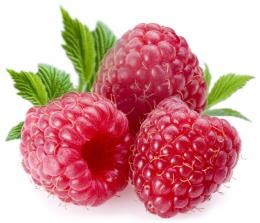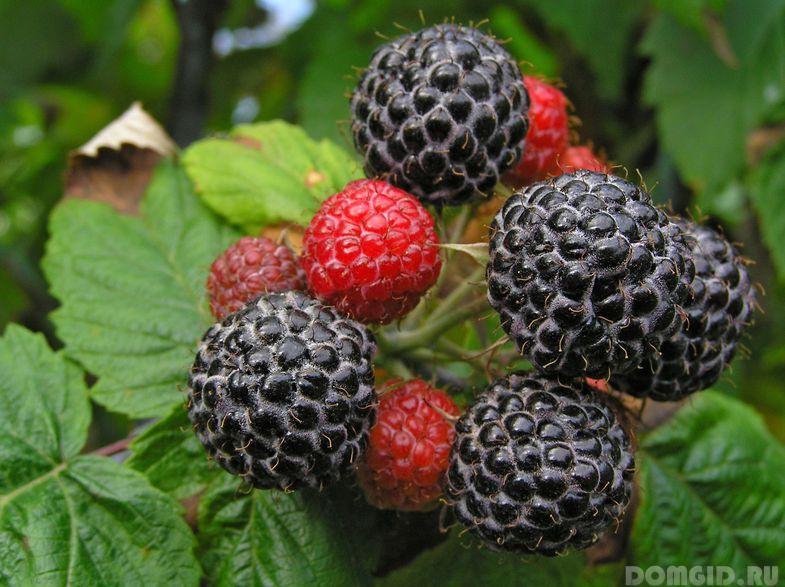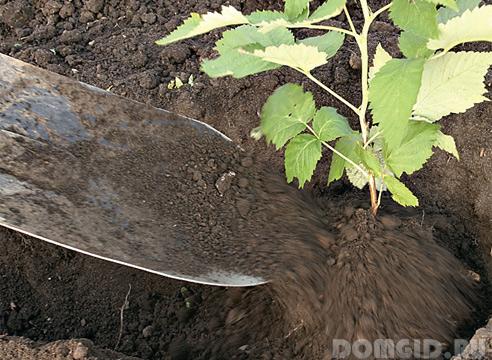Search
Login
Garden raspberries, varieties, care features and the secrets of successfully growing a rich harvest. Useful properties of raspberries and methods for its preparation
Humanity has long known about this plant. Raspberry seeds were found by archaeologists, digging out settlements of the Bronze and Stone Ages. Although in those days, its consumers, most likely, were not particularly interested in growing raspberries. The Roman writer Pliny (1st century AD), who tells about its cultivation in Central Asia, also has information about wild raspberries.
Despite the fact that the original raspberry was a wild plant, the Greeks and Romans knew about the beneficial properties of berries and used it for various purposes. For example, with the help of these berries, many diseases, scorpion and snake bites were cured. In the sixteenth century in Western Europe, the cultivation of raspberries began. She began to be transplanted from forests to gardens at the monasteries. From the seventeenth century, various varieties of raspberries began to appear. Gardeners began to be seriously interested in this plant.
Content
- Types and varieties of raspberries video
- Raspberry planting and care
- Secrets of getting a good harvest video video video
- Watering raspberries
- Pests
- Raspberry disease
- About the beneficial properties of raspberries and preparations for the winter
Types and varieties of raspberries
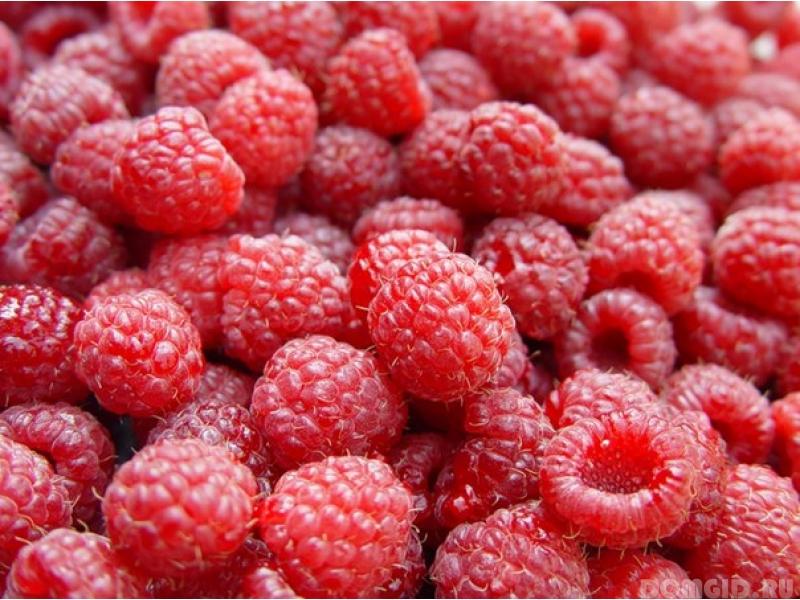
Raspberry bush - a plant with a perennial root system, reaching a height of about two meters. The main varieties of shrubs are divided according to the following essential indicators:
-
by the ratio of the size of berries - to varieties with large fruits and with traditional ones;
-
in relation to fruiting, there are repair and traditional varieties.
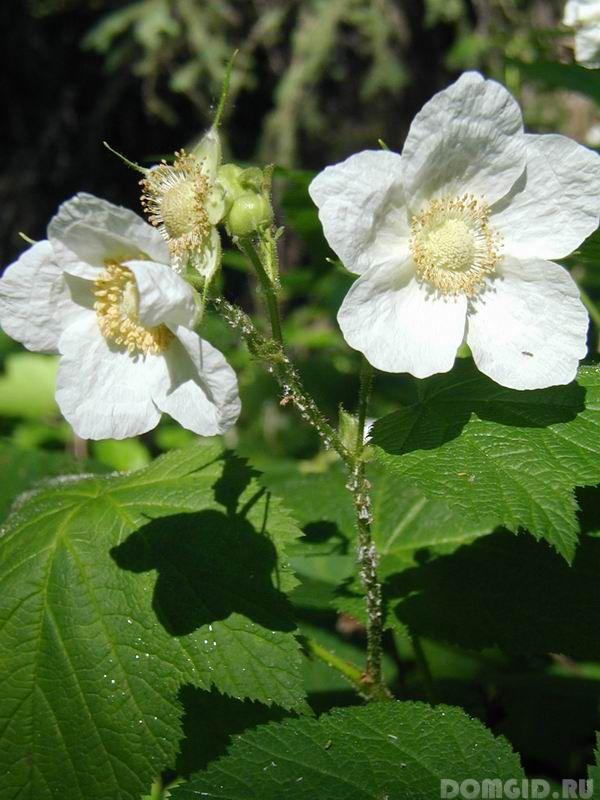
Naturally, everyone varieties and species There are disadvantages and advantages. Types of raspberries, related to traditional, are considered not particularly whimsical. They undergo severe frosts remarkably, multiply well, every year releasing several young shoots from the root system. However, the berries do not differ in large sizes. Their weight is only 3-4 grams.
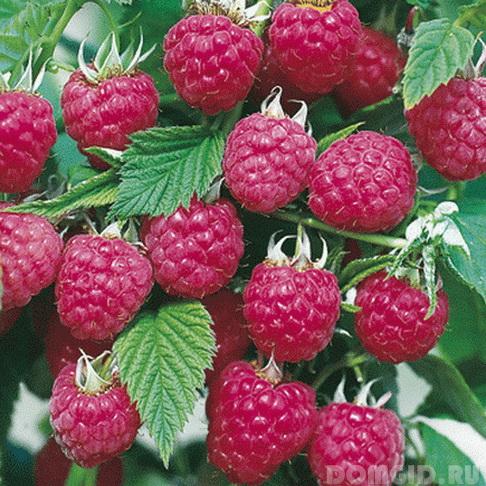
Varieties bearing large berries give a good harvest. The weight of the fruit is from 4-12 grams. It happens that on the shoots alone, the weight of the fetus reaches 20 grams. Often, branches of raspberry large-fruited branches. As a result, five shoots can leave from one branch, which will also bear fruit well. The most recognized and popular variety of large-fruited species is the variety Izobilny. Large-fruited varieties are famous for their good taste, pleasant and sweet aroma.
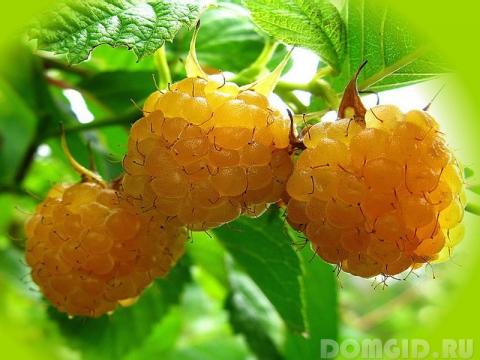
Repair raspberries yield twice a year. Moreover, the berries from the second, the size will be larger than from the first harvest. Surprisingly, you can collect the fruits of the second crop right up to severe frosts.
Depending on the variety, any type of raspberry can be either sweet or sour-sweet, maturing in late, mid-early and early, with berries painted in yellow, red and black. If you want to plant an early variety of raspberries - buy, you will not regret, the varieties Cumberland or Abundant.
These two varieties have sufficiently large fruits and survive frosts perfectly. Abundant raspberries will delight you with bright red fruits, and Cumberland will surprise you with black berries. Both varieties are great, if necessary, will carry transportation and will not lose their presentation.
Let's get to know better with medium early raspberry varieties. In the CIS markets, this species is represented by the following varieties:
-
Arbat - gives not a small number of large berries, weighing about 18 grams, but very badly experiences severe frosts;
-
Yellow giant - bears fruit in light yellow color, belongs to the remodeling species, fruits are about 8 grams;
-
Lilac fog - not susceptible to viral diseases, a variety with large berries, weighing up to 10 grams.
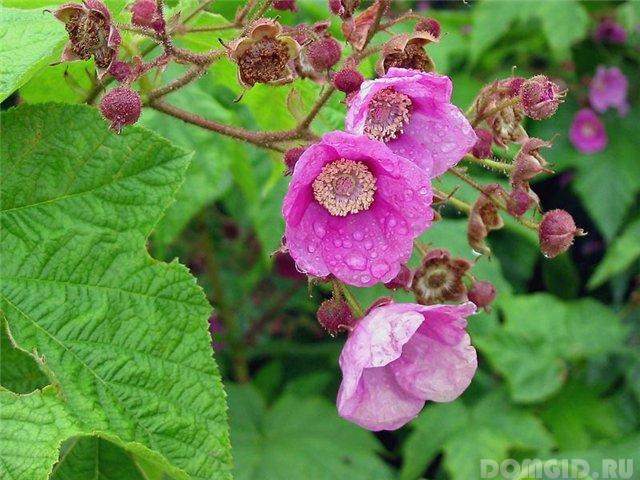
Now, not much about late-ripening varieties. In this form, it should be noted such varieties as:
-
Arabesque - a bush up to two meters high, burgundy red berries, fruits weigh up to 8 grams, undemanding in care and planting;
-
Tarusa - the height of this tree-like variety reaches 2.5 meters, the berries are bright red, the bush does not need supports, the berries are unpretentious during transportation.
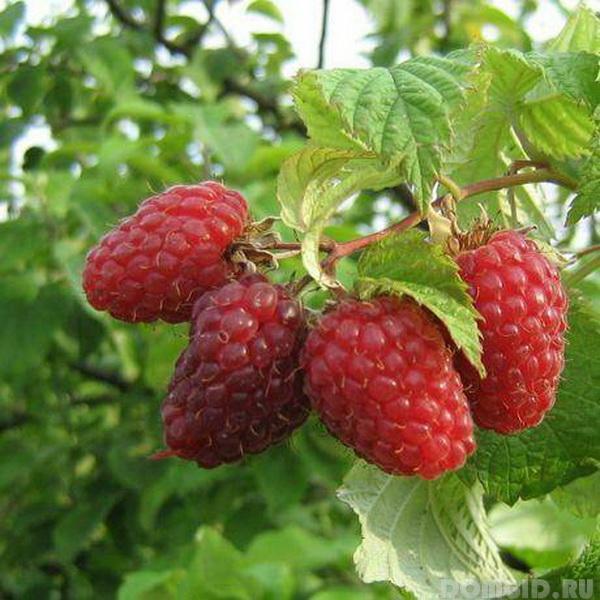
Raspberry planting and care
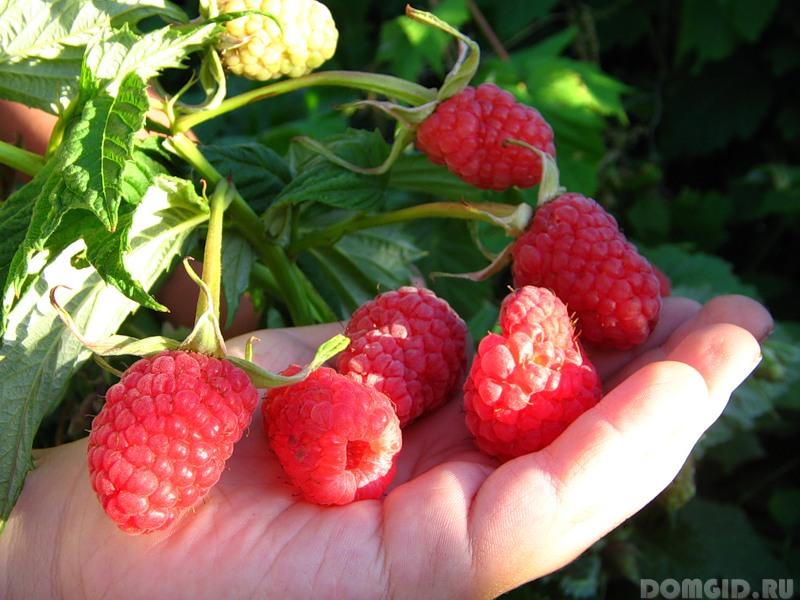
Raspberry seedlings should be planted in a place not very shaded, in a couple of rows, after which the bushes should be strapped. The gap between them should leave about 70 cm, and the row spacing is at least 2 m. The depth of the hole must be made 70 cm.
In each such hole, you can plant two seedlings - this will contribute to an earlier and better harvest. Sandy soil with a minimum content of clay impurities is well suited for planting. Unfortunately, raspberry shrubs will not take root on soil with stagnant water.
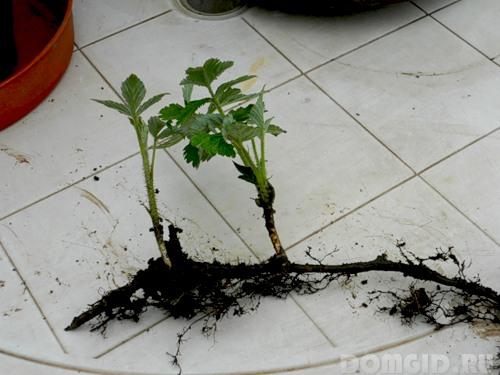
Humus is put in the dug hole and filled with water. While water is absorbed into the soil, the seedling is cut off, leaving a height of 15 cm from the root. Of course, with such a small stem, in the first year of life the plant will not bear fruit, but this procedure will make it possible to strengthen the rhizome and painlessly wintered. After planting, the raspberry bush is watered and mulched without fail. Do not neglect the process of mulching - it will make it possible to retain all the nutrients and nutrients in the layers of chernozem.
Secrets of getting a good harvest
Any varieties of different types and crosses will reduce fruiting or even stop yielding, if you neglect the care of raspberries in spring and summer. In the summer, the enemy of plants can become a high temperature - plants of this species cannot tolerate insufficient moisture in the soil. It follows that watering raspberries needs to be done constantly - before the beginning of flowering, before the start of ripening and during the ripening of berries. On average, the amount of water poured should be 30-40 l / m2 at a time.
Chernozem, in the place where raspberries are planted, you need to constantly fertilize and loosen. It is necessary to fertilize the soil in raspberries with fertilizers in spring and autumn. We should not forget about the regular tying and shaping the formed bush.
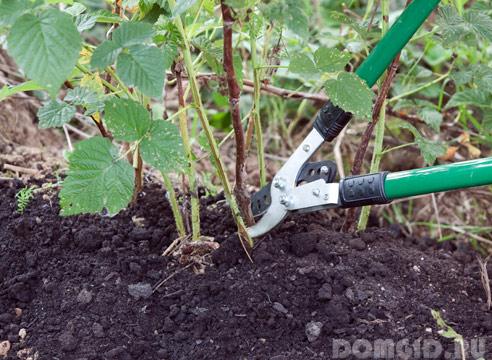
An important, significant moment in the care, is the preparation of the bush for winter. When preparing repairing varieties, you must remove the entire part located above the ground. And shoots in varieties resistant to cold simply bend and hide under the snow layer.
There are several ways to increase the number of fruits of repair varieties. In order to have time to grow and harvest them, you need:
-
buy raspberries (seedlings) of high-yielding varieties,
-
it is desirable to plant repair bushes in the ground, well fertilized with organic substances;
-
in spring you need to remove snow around the bush, and when the shoots appear, cover them with a film.
Adhering to not very difficult rules for care, you can grow raspberries without much physical exertion.
In order that the berries were not dry and small, shrubs need to be watered according to the rules. The problem is that the part of the plant located above the soil has sufficient area for evaporation. It is clear that because of this, the root system, located not at all deep, will not be able to provide the plant with sufficient moisture to ripen the crop.
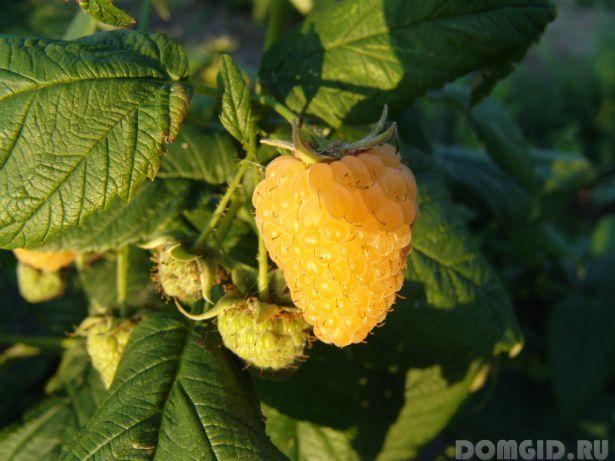
The number and frequency of irrigation depends on the air temperature and the amount of precipitation. The greatest amount of water is needed for raspberries during flowering, fruit formation and, of course, during their ripening period - for most varieties this time starts from the end of May and lasts until the beginning of June. Subject to the rules of watering and fertilizing the soil, the fruits will be larger in size than raspberry shrubs with improper watering.
When the weather is hot for a long time, the bushes begin to fade - this is the first omen that they lack moisture. The ground under the bush needs to be watered constantly. With prolonged drought, it is necessary to water it so that the water penetrates to a depth of at least 30 cm (it is at this depth that the root system is located). After such irrigation, after waiting for the water to enter, you need to loosen the upper 5 cm of soil under the bush. This procedure will enable the root system to feed on oxygen.
Watering raspberries
The best option for watering raspberry bushes is considered to be watering on previously dug grooves, the location of which is determined by the age of the plant and the structure of the chernozem. Raspberry-bearing fruit, in the third year after planting, already has a well-developed rhizome up to 2 m in diameter. It follows that the grooves must be made between the rows. If the soil under the raspberry is heavy, then the groove is made one in the center in the row-spacing, and if it is light, then you can make several by placing them 70 cm from the row. The depth of the groove is 9-12 cm, the amount of water for each meter will be 3-4 buckets. For watering, you should take water that has stood in the sun, it is better absorbed by the roots.
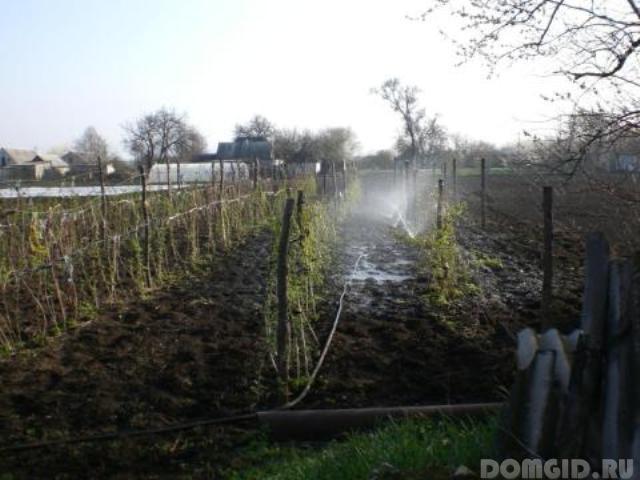
Starting from the end of August, raspberry irrigation should be stopped, during this period there will be enough rainfall. Excess moisture will interfere with the formation of shoots and may reduce their resistance to frost. And excess moisture can contribute to the development of diseases. At the end of the summer period, it is recommended to water raspberries only if the weather is still hot and they do not promise rain.
Pests
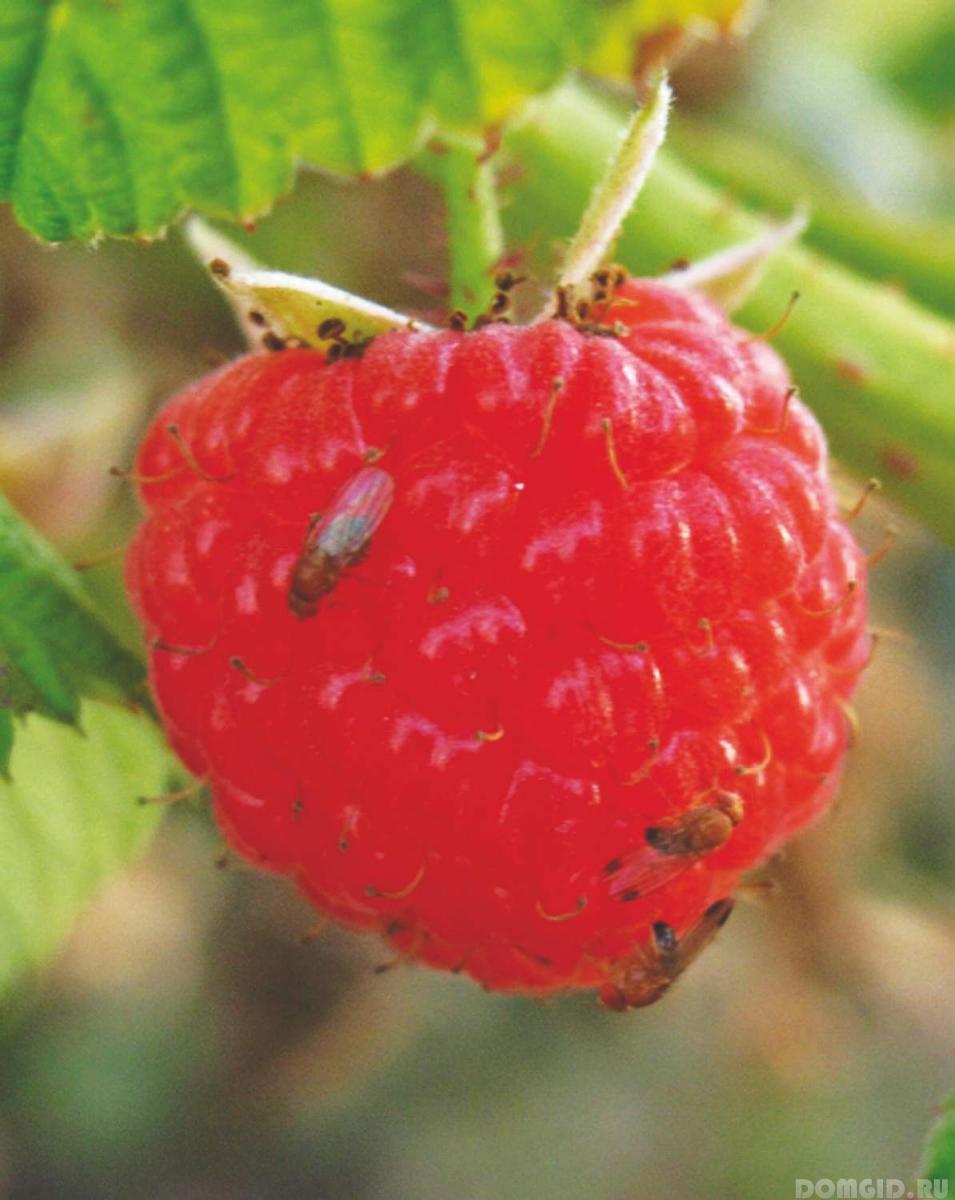
In those places where bushes grow and bear fruit, in any case, pests will appear. Unfortunately, this fact was not spared by Malin. Here are some of the most aggressive pests:
- Raspberry stem fly is one of the most dangerous pests for raspberries. This insect is about 0.6 cm long, devouring young stems. in May, flies on the leaves lay eggs. Larvae that later appeared gnaw through the stem, descend into it to the base of the shoot. After which the shoots rot and die.
-
In the winter, a raspberry beetle lives in the upper layer of black soil. At the end of spring, beetles gather in the bushes, eating leaves, buds and flowers.
-
Raspberry-strawberry weevil, with the advent of spring, begins to devour leaves and buds. Females in buds lay eggs, destroying the peduncle.
-
Raspberry shoot aphid - satisfying its appetites, deforms the shoots, causing twisting of the leaves.
-
Raspberry leaf aphid - lives in small groups on shoots or leaves and that the worst tolerates viral diseases.
-
Raspberry shoot gall midge is one of the most famous pests. The eggs laid by them in different parts of the shoot form an infection, manifested by brown spots and drying of the shoots.
-
Spider mite - feeds on the juice of stems and leaves, wraps them with cobwebs.
To combat raspberry pests, special treatment is needed. The best prevention will be constant care, removal of infected parts, digging in the land and while the garbage is cleaned.
Raspberry disease
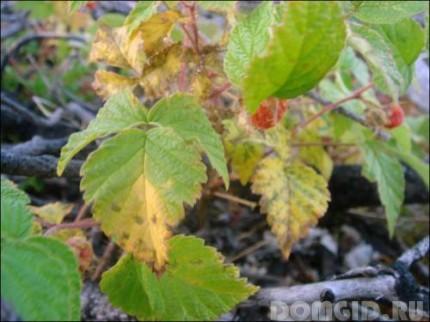
The most common viral diseases:
-
Bushiness. Cicadas infect this disease. The stems are low and thin, the lateral branches are poorly developed, the leaves are affected. Infected shrubs do not bear fruit.
-
Curliness. Infection comes from aphids. The shoots have a normal appearance, the leaves are very deformed, the berries are of a changed shape and sour to taste.
-
Mosaic. Infection comes from the same aphid. Both shoots and leaves are affected. Foliage turns yellow. Mosaic plants inhibit growth, leaves change, shoots are thin and weak, fruits are dry and have no taste.
-
Ring spotting. The carrier is a nematode. The virus infects the plant and soil. Initially manifested on leaves, changing their color and shape. The yield is very low. A healthy plant may well get it through contaminated land.
-
Infectious chlorosis. The carrier is aphids. The first in chlorosis the leaves begin to turn yellow. By mid-summer, the bush is almost all yellow. Berries are very poorly developed.
In densely planted raspberries, infection with pathogenic fungi often occurs, which adore poorly ventilated places.
A wide assortment of raspberry disease control products is offered by stores specialized in the sale of plant protection products. Care for raspberries in the spring must include preventive treatment.
Common fungal diseases:
-
Anthracnose. Shoots and leaves become brown and soon dry. In autumn, the fungus forms black dots on plants and hibernates on the remains of affected stems.
-
Septoria (white spotting raspberries). The disease affects both leaves and stems, covering them with brown round spots, eventually change color to almost white into a black, already familiar, dot. After septoria, the plant does not survive the winter, but the fungus does not die, and other shrubs are sent to infect.
-
Rust. This disease of leaves and shoots. It appears in the form of yellow tubercles on the outside of the leaves. In the summer, whiter, warmer period, forms on the inner side of the leaf similar tubercles, but already rusty-brown in color. On the stem, near the root, lesions similar to ulcers appear.
The fight against these diseases is basically the same - compliance with the rules of planting, thinning, removal and burning of infected plants, cleaning the site, digging up the soil with phosphorus fertilizers, and spraying.
About the beneficial properties of raspberries and preparations for the winter
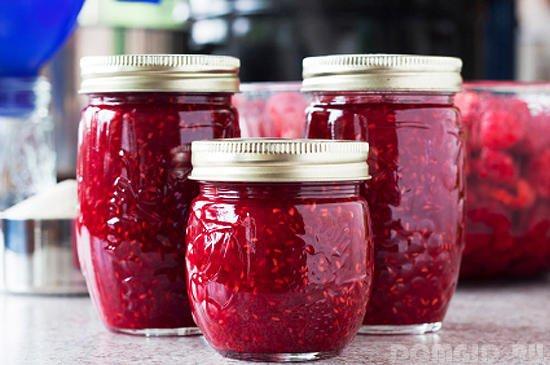
Raspberry berries are very useful, they are rich in vitamins, glucose and organic acids, pectins, fiber, tannins, minerals and trace elements. Berries, flowers and young stems have long been used in folk medicine for the prevention and treatment of acute respiratory viral infections and colds, manifestations of radiculitis and neuralgia. The systematic use of berries saturates the body with folic acid. In addition, raspberries have antidepressant properties.
A wonderful, delicious raspberry jam is made from berries. Berries can also be frozen or dried. Frozen raspberries can be used in the winter to make pies or dumplings, you can cook compote from it. Tea with frozen or dried raspberry berries will help to quickly cure a cold or SARS. It is very useful to use raspberries throughout the year for diabetics - it can lower blood sugar levels in humans.




